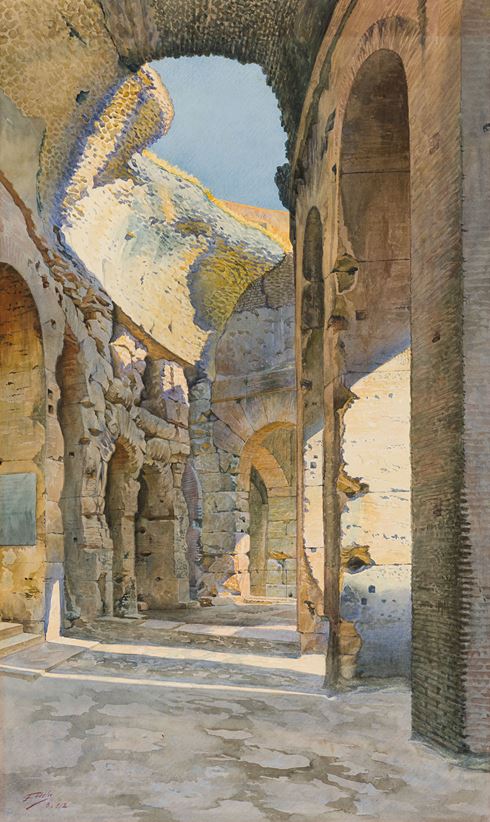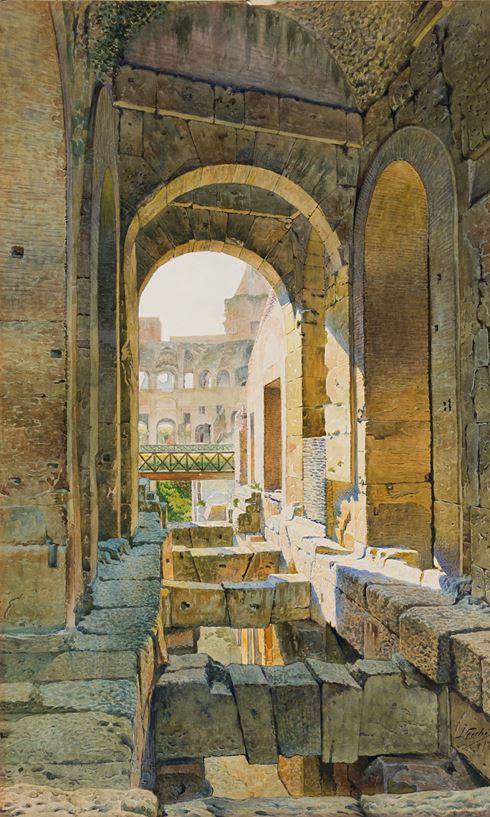
Lorenzo CECCHI
Limite sull’Arno 1864 - Ghivizzano Coreglia 1940
Biography
An architect, painter, sculptor and teacher, Lorenzo Cecchi spent his youth in the port town of Livorno, on the western coast of Tuscany. He taught at the Scuola di Arti e Mestieri, the local school of arts and crafts, for several years, and influenced a later generation of Tuscan painters. Among Cecchi’s most significant commissions as an architect is the neo-Gothic Marassi family chapel in the Cimitero delle Porte Sante in Florence; executed in the 1880s, it was one of the largest and most grandiose structures in the cemetery, but is now largely derelict. In 1908 he settled in Rome, where he worked for the next thirty years as a professor of drawing. Cecchi remains a relatively obscure figure today, even within Italy. A retrospective exhibition of his work was held in Montecatini Terme in 1972, and another show of paintings and watercolours by Cecchi was mounted at a gallery in Livorno in 2006.
Throughout his career, Cecchi was particularly admired for his finished watercolours of views, sites and monuments in the provinces of Tuscany, Sardinia, Umbria and Lazio, as well as Pompeii and the ancient temples of Magna Graecia and Sicily; all imbued with a remarkable technical virtuosity and a particular interest in architectural forms. As his biographer Gino Mazzanti, a former student, described him, he was ‘a multi-faceted and productive artist, especially in the field of architecture of which he was a profound connoisseur.’ Cecchi was perhaps best known for his vibrant watercolours of the buildings and ruins of Imperial Rome, executed during his long stay in the Eternal City.



